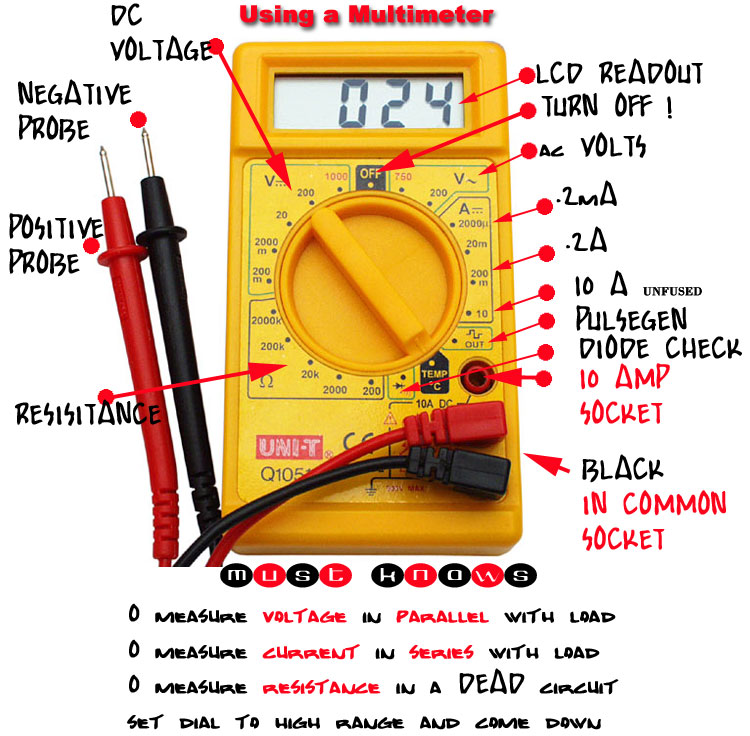Mastering Multimeter AC DC Symbols: A Comprehensive Guide

Have you ever looked at your multimeter and felt overwhelmed by the cryptic symbols scattered across its dial? Understanding these symbols, particularly those for AC and DC voltage and current, is crucial for anyone working with electronics. This comprehensive guide will demystify these symbols and empower you to use your multimeter with confidence.
A multimeter is an essential tool for any electronics enthusiast, hobbyist, or professional. Its ability to measure various electrical properties like voltage, current, and resistance makes it indispensable for troubleshooting circuits, testing components, and ensuring the proper functioning of electronic devices. At the heart of using a multimeter effectively lies the ability to interpret its symbols accurately. Knowing the difference between the alternating current (AC) and direct current (DC) designations is fundamental.
The AC and DC symbols on a multimeter indicate the type of electrical current being measured. DC, represented by a straight line with dashes underneath or alongside, flows consistently in one direction. Common DC sources include batteries and power supplies. AC, symbolized by a wavy line (~), periodically reverses its direction. This is the type of current supplied by household outlets. Selecting the correct setting on your multimeter based on these symbols is essential to obtain accurate readings and avoid damaging the meter.
Misinterpreting or ignoring the AC and DC symbols can lead to incorrect measurements and potentially damage the multimeter or the circuit being tested. For example, attempting to measure AC voltage with the multimeter set to DC can result in inaccurate readings or even damage the meter's internal circuitry. Conversely, measuring DC voltage on an AC setting might yield a zero reading, leading to a misdiagnosis of the circuit's problem. Understanding these symbols is paramount to avoid such pitfalls.
The history of these symbols is intertwined with the development of electrical theory and standardization. As electricity became more widely used, the need for consistent symbols to represent different electrical quantities and characteristics arose. The standardization of these symbols, including those for AC and DC, facilitated clear communication and understanding among engineers, technicians, and users of electrical equipment worldwide.
AC Symbol: The AC symbol, typically a tilde (~), represents alternating current. It visually depicts the oscillating nature of the current flow.
DC Symbol: The DC symbol, commonly a straight line with dashes, represents direct current. This symbolizes the unidirectional flow of current.
Benefits of Understanding Multimeter AC/DC Symbols
1. Accurate Measurements: Selecting the correct AC or DC setting ensures accurate readings, preventing misdiagnosis of electrical problems. For instance, measuring the DC voltage of a battery with the DC setting provides a precise voltage reading, essential for determining its charge level.
2. Safety: Properly interpreting the symbols prevents potential damage to the multimeter and the circuit being tested. Using the AC setting when measuring mains voltage protects the meter from damage and ensures user safety.
3. Effective Troubleshooting: Correctly identifying the type of current allows for efficient identification and resolution of circuit faults. Knowing whether a circuit operates on AC or DC guides troubleshooting steps and helps pinpoint the source of the problem.
Best Practices for Using a Multimeter with AC/DC Symbols:
1. Always check the symbol next to the selected setting to confirm you are measuring the correct type of current.
2. Start with the highest range and then step down to get the most accurate reading.
3. Never exceed the maximum voltage or current rating of your multimeter.
4. When unsure about the current type, start with the AC setting and observe the reading. A stable reading indicates AC, while a fluctuating or zero reading suggests DC.
5. Regularly inspect the multimeter's leads and probes for damage.
Frequently Asked Questions
1. What does the wavy line symbol mean on a multimeter? It represents alternating current (AC).
2. What does the straight line with dashes symbol mean? It represents direct current (DC).
3. What happens if I measure AC voltage with the DC setting? You might get inaccurate readings or damage the meter.
4. What happens if I measure DC voltage with the AC setting? You might get a zero reading.
5. Why is it important to use the correct setting? For accuracy and safety.
6. What other symbols are important on a multimeter? Resistance (Ω), capacitance (F), and frequency (Hz) symbols are also crucial.
7. How do I know which setting to use? Refer to the circuit diagram or documentation, or if unsure, start with the highest range and AC setting.
8. Where can I learn more about multimeters? Online tutorials, electronics textbooks, and manufacturer manuals are excellent resources.
In conclusion, understanding the AC and DC symbols on your multimeter is fundamental for anyone working with electronics. These symbols provide critical information about the type of current being measured, ensuring accurate readings, preventing equipment damage, and facilitating effective troubleshooting. By mastering the interpretation of these symbols and following the best practices outlined in this guide, you can confidently use your multimeter to explore the world of electronics and undertake a wide range of electrical projects. Remember to always prioritize safety and consult reliable resources for further learning. Take the time to familiarize yourself with these essential symbols and unlock the full potential of your multimeter.
Protecting your vessel a guide to boat lift canopies and frames
Cozy vibes with behrs cotton knit a paint color guide
Reimagine color exploring sherwin williams recycled paint












